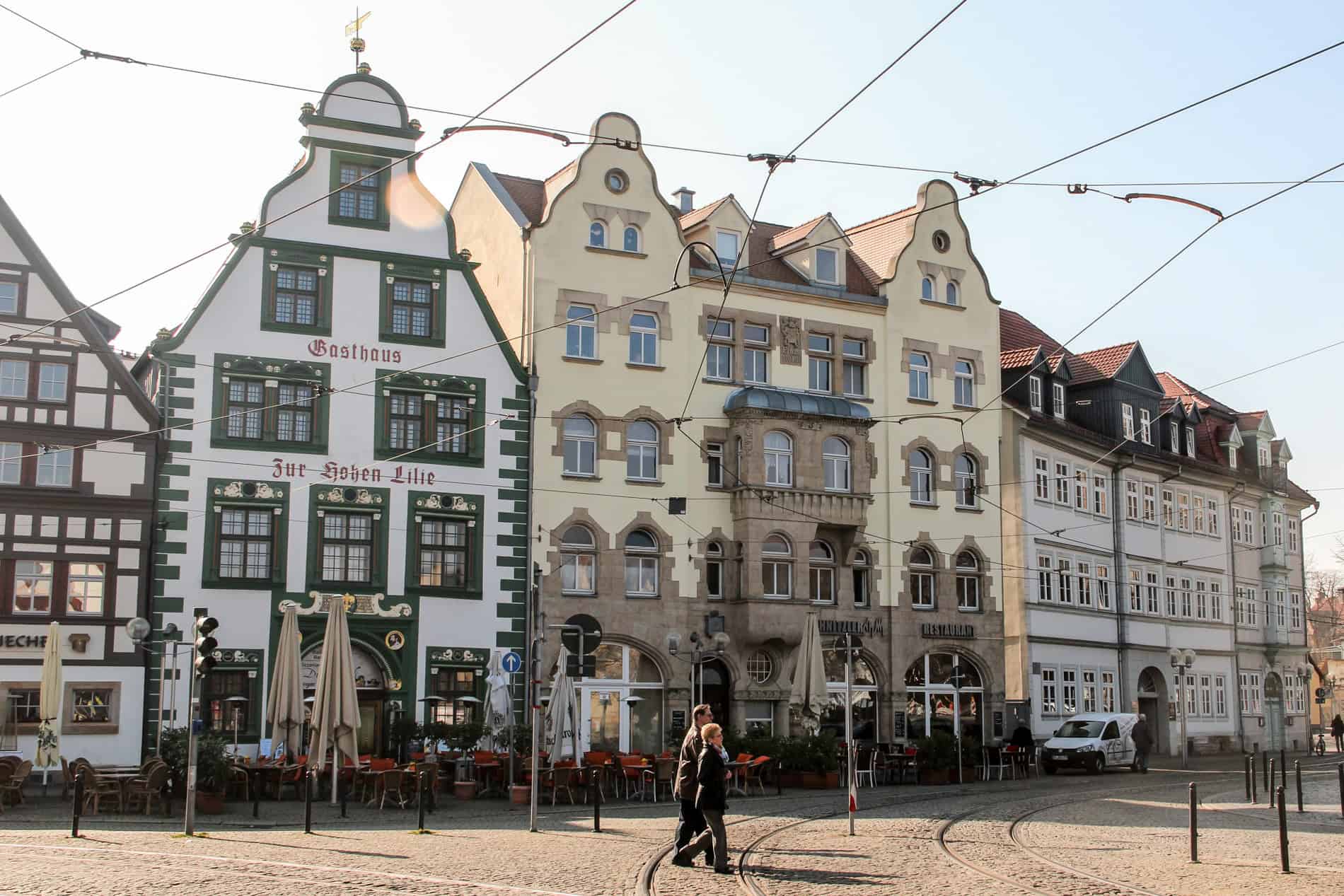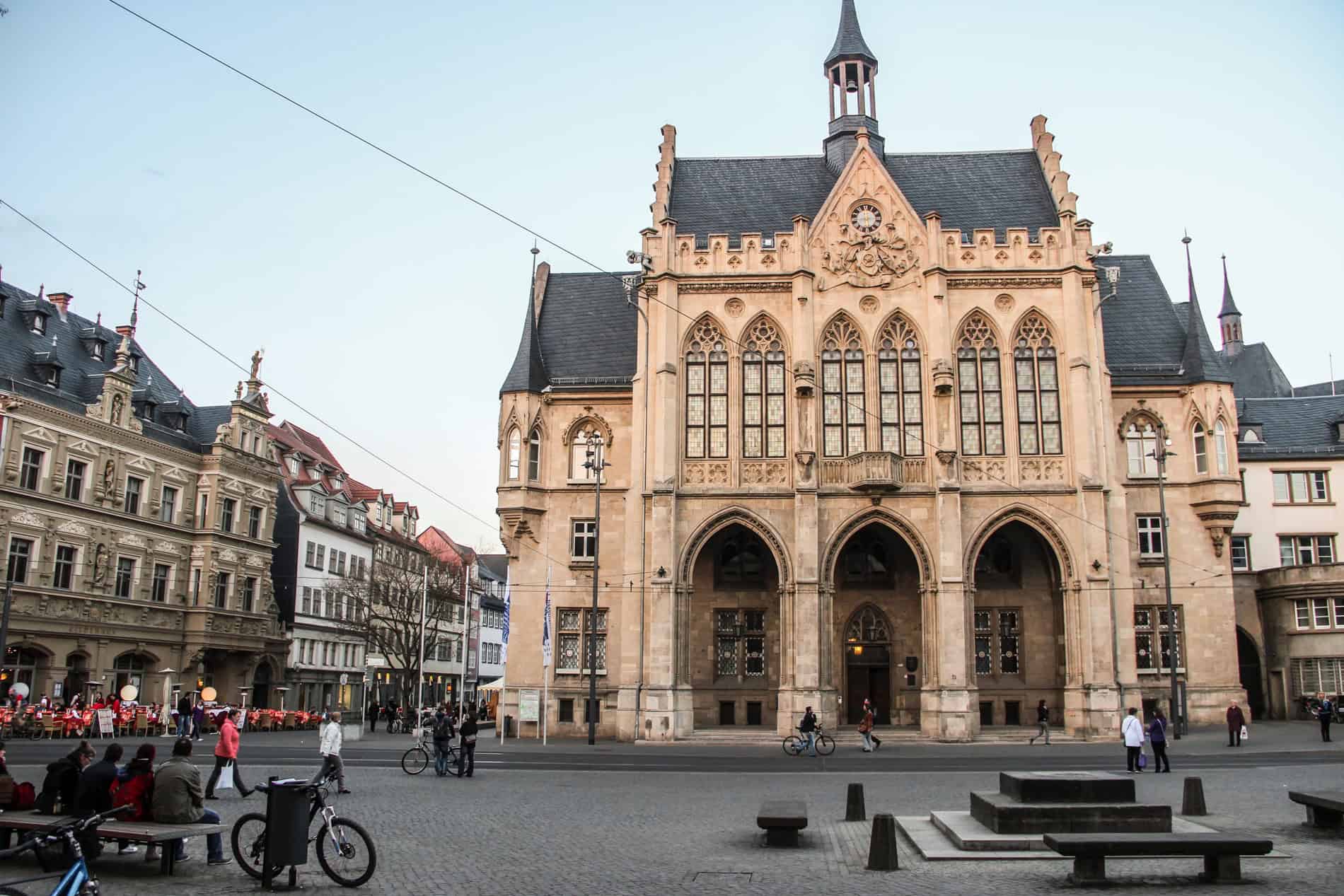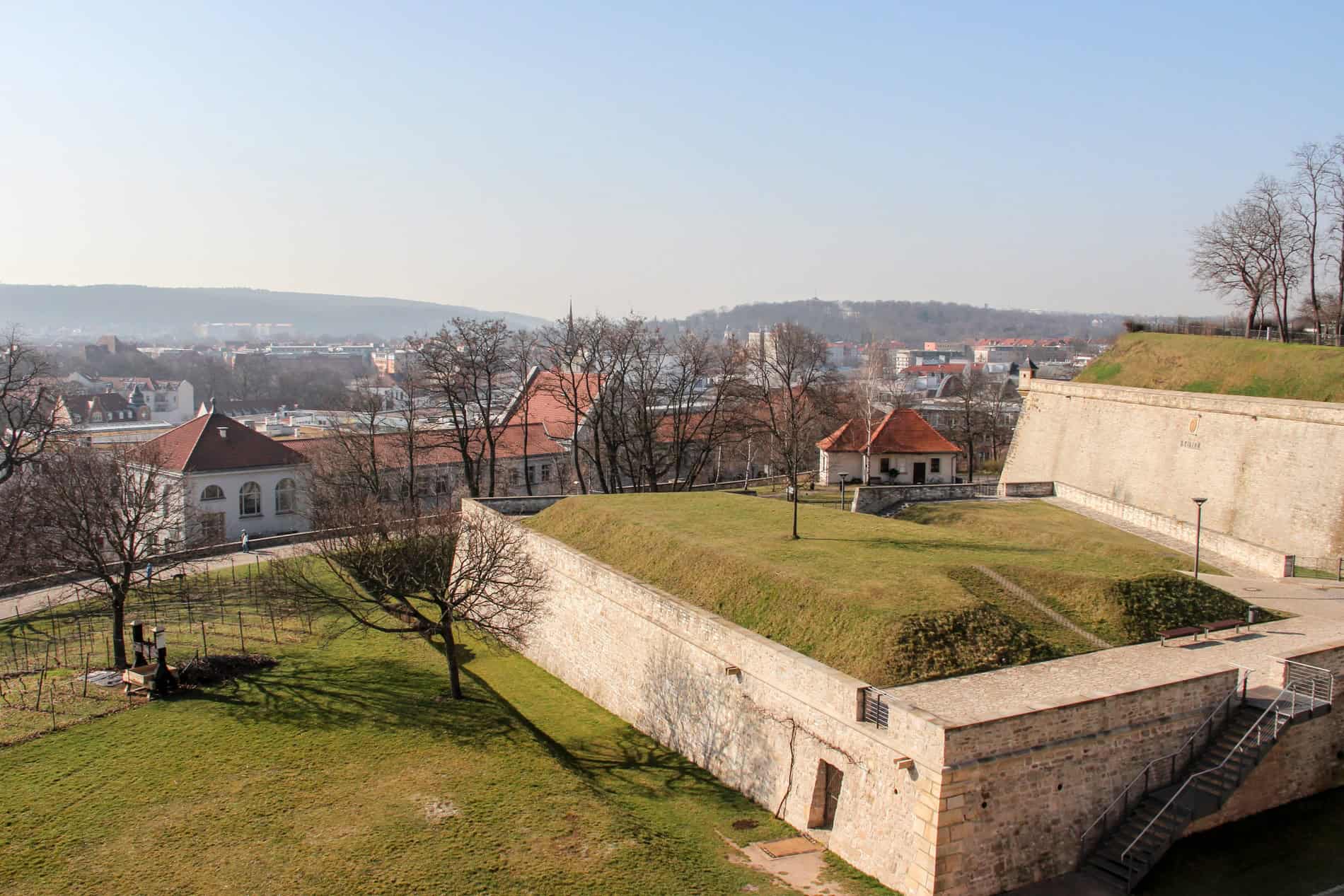Disclaimer: This post contains affiliate links to handpicked partners, including tours, gear and booking sites. If you click through or buy something via one of them, I may receive a small commission. This is at no extra cost to you and allows this site to keep running.
Here are all the things to do in Erfurt, Germany, which show how the city – dubbed the “picture book of German history” – has regained a stunning restoration after socialist rule.
“Erfurt is such a bright place now, but much of its past isn’t.” This phrase stuck in my mind at the end of my time in Erfurt, Germany. It was in response to my announcement of it as my second favourite German city after Berlin.
On the surface, this restored medieval area is nothing short of what German writer Arnold Zweig describes as “a picture book of German history,” yet it’s easy to forget its darker days when it was a part of the former socialist East Germany.
Passing through, it looks completely untainted; there’s no hint of ‘East Germany’ unless you look hard enough. From its time as a prime European trading route in the Middle Ages, to its cultural and politically rich present following the reunification of Germany, to visit Erfurt means understanding than just its elegant exterior.

Things to do in Erfurt, Germany – the “picture book of German history”.
Erfurt – Germany’s Biggest Single Preservation Area
The 1270-year-old history of Erfurt lives on in its cobbled streets and charming restored Renaissance buildings. A city perched within the green heart of Germany, everywhere you look is picturesque, living up to its name of ‘Thuringia’s Rome’.
Culturally, it shines, having been home to artists and intellectuals, including Bach and church reformist Martin Luther, who paved the way for its rich heritage and artistic vibrancy. It’s an incredible space to wander around – compact, easily navigable, and mostly pedestrianised. Different architectural designs and colours stand perfectly aligned on every corner, side street, and winding alley; its long-established history is preserved while sitting side by side with sporadic modern additions.
Erfurt survived much of the Second World War untouched, yet its buildings were left to decay during its East Germany days. The Soviets had little money to bulldoze and rebuild here in their distinct style.
Erfurt was occupied, but it was never destroyed
With the fall of the Berlin Wall, the city was lovingly restored, able to retain its old history without the lingering Cold War reminders of Russian architecture.
From the Cathedral and Church of St Severus, the Old Synagogue, and the cobblestone street of 32 half-timbered buildings of the Merchants’ Bridge (Krämerbrücke Bridge) to the boutique shops, street cafes, and riverside hangouts, Erfurt mixes medieval splendour with metropolitan sheen.
You can wander the boutiques, galleries, and medieval craft workshops on the bridge before enjoying a drink in one of the beer gardens behind it; get lost in the tiny streets before lounging in a café on one of the more modern thoroughfares.
BOOK: A 90-minute walking tour of Erfurt Old Town and visit the historical highlights with a local.

Erfurt’s restored Renaissance buildings.

Fischmarkt Square, Erfurt.

Domplatz architecture, Erfurt old town.

Krämerbrücke (Merchant’s Bridge), a landmark of Erfurt city.

A cobbled street of galleries and shops on the Krämerbrücke.

River Gera waterfront in Erfurt.

Die Alte Synagogue (Old Synagogue), from the first Jewish community in Erfurt.

Erfurt neo-Gothic City Hall.
Erfurt’s Cold War History is Not Forgotten
It wasn’t until I visited the fortress Petersberg (Zitadelle Petersberg) and stood high on the famous Cathedral steps down into the Domplatz (Cathedral Square) that Erfurt’s Cold War history became most apparent.
The fortress may provide an incredible view across the city and a mysterious space where you can wander within its tunnel-like passages or take a guided tour with an expert. However, it was also the place where the Nazis executed deserters, and the Soviets later took over as a base for its state security operations.
Today, expensive apartment rentals are part of the area’s conversion, standing next to the building where the Stassi files are now kept (locals can now look up what was documented about them during the time of socialist rule – as is the norm across former East Germany states). Historical tours return it to its former glory.
At the bottom of the hill is the Erfurt-Memorial-and-Educational-Site-Andreasstrasse (Erfurt Stasi Museum – the site of the former Stasi prison) – a dominating and looming building that is hard to walk past and forget about. If you want a comprehensive historical overview of Erfurt outside of its medieval charm and educational insight into the Cold War and Soviet occupation, then this educational and captivating museum is necessary. It’s chilling, but you leave with a better understanding and appreciation for Erfurt and what it has become today.

Erfurt’s Zitadelle Petersberg.

Erfurt city views from the Petersberg fortress.

Erfurt Memorial and Educational Site Andreasstrasse (Stassi Museum).
And when you wander down the Cathedral steps, look out into the square. While Leipzig started the ‘Peaceful Protest’ movement, smaller gatherings took place elsewhere, and Erfurt was one of them. Locals rallied to peacefully end division, for the country to be unified, and for the Iron Curtain to be dissolved.

Walking down the steps of Erfurter Dom (Erfurt Cathedral) into Domplatz.
When I posted a ‘then and now’ picture on Facebook, fellow traveller Steve Hänisch posted his memories of this place. At that point, it really hit home how recent this history is and how it affected my generation and my friends.
“As a young person, it wasn’t that bad living here. Thuringia was directly at the border with West Germany, so we couldn’t go any further to visit our family there (even though they could visit us). In reality, I knew of nothing else,” comments Steve on his time living in the area when Erfurt was part of East Germany.
“I was only 7 years old when I took part in the peaceful protests, and for me, it was more like an adventure – I just realised later the role we played in the whole thing. I was shouting the slogans ‘Schwarz-Rot-Gold, Wir sind das Volk’ and have it still in my ear when I’m thinking about it today. I’m glad I now have the freedom to do things my grandparents never had the chance to do – travel the world freely. I feel more aware of how lucky I really am.”
How lucky we are, too, to experience the freedom of a united Germany and to enjoy the long-established history of such beautiful and charming destinations.
We must do so without forgetting the tough pasts that helped shape them into their modern-day brilliance.
Places to Go in Former East Germany
Erfurt was my fourth stop on my ‘Fall of the Wall’ trip to former towns and cities of East Germany. It was a chance to see the modern face of Germany since reunification and how these towns and cities have changed, adapted, and become destinations worth visiting. Why not combine one or more with Erfurt on a historical journey?
- Day Trip to Potsdam from Berlin– How the city neighbouring Berlin reinvented itself.
- How to See Weimar – A cultural hotspot with a complex history.
- What to Do When You Visit Leipzig – A city that stylishly reinvents itself.
- Things to Do in Dresden City – Where old is new and what’s new is old.
This post is in conjunction with the German National Tourist Office and my report on looking at the country after the fall of the Berlin Wall. All opinions remain my own.



Jörg says
That’s a nice sum up of Erfurt, historically and in photography. I guess you also walked along the impressive Anger.
Sammi says
Hear, hear, it amazes when people talk to me about the east and west side of Berlin, I think I am slightly too young to appreciate it. As I don’t remember the wall being torn down. When I visited the city with some other bloggers who were older and had memories of the day, they told me it’s like September 11th, everyone knows where they were when they heard what had happened. Similarly, regarding the Iron Curtain, one of the drivers I had with Busabout this summer has memories of his home being part of a communist country, and told us of his family waiting for their car and when it eventually turned up it was the wrong colour- they never said anything because then they’d have had to wait even longer!
Lauren says
I’m glad that the past is not forgotten because this is the only way we can make sure it doesn’t happen again. Very thoughtful and engaging post. I love your photos!
Jen Seligmann says
I love hearing about stories of change in the world but at the same time, every story of change comes with a story of loss and unspeakable atrocities which makes me sad. It looks like a really pretty town.
Becki says
Sadly, I think that’s how much of the world is. Everywhere has it’s own story – we just have to appreciate and celebrate the positives that come from dark pasts…without forgetting.
NZ Muse says
Choosing to celebrate the positives: that is a great way to put it, i must admit toward the end of my RTW trip this was starting to wear me down – realising everywhere I went had a history of oppression or slavery or war, everywhere was built essentially on blood and fighting.
Sofia Rhodes says
I have never been to Germany but, looking at the pictures it is really looking nice and I’ll definitely visit this place. Thanks for the post.